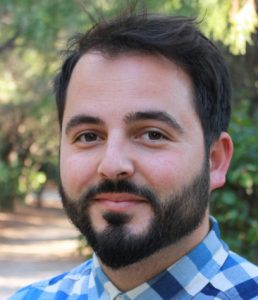EMS2018 from the perspective of Young Scientist Award winner Georgios Varlas

This year was my first time attending the EMS annual meeting, held in Budapest in September, and it was a great experience. It was a week full of opportunities to learn about the activities of other researchers from all over the world as well as exchanging opinions about current scientific issues. The meeting took place at the impressive historical building of Corvinus University in the centre of the city. The presentations covered a wide variety of research topics in atmospheric physics, meteorology, climate modeling, measurements and applications. I was really inspired by Dr. Louis Uccellini’s keynote lecture “Building Weather-Ready Nations — The New International Need”. I also found sessions on “Ocean–atmosphere interactions and coastal processes”, “The Weather Research and Forecasting Model (WRF): development, research and applications” and “Cloud-aerosol-radiation interactions” particularly interesting.
The highlights of the EMS Annual Meeting week for me were the awards ceremony on the 3rd of September, when I had the chance to meet distinguished meteorologists and my solicited lecture on the 7th of September, where I presented my latest research activities. Receiving the EMS Young Scientist Award for my publication: “Implementation of a two-way coupled atmosphere-ocean wave modeling system for assessing air-sea interaction over the Mediterranean Sea” in the Atmospheric Research journal was a great honor and it has certainly motivated me to continue my work with the same determination.
The goal of my research was to create a single weather modeling system to simulate interactions between Earth subsystems. In collaboration with Harokopio University of Athens and the Hellenic Center for Marine Research, I started working on extending the CHAOS (Chemical Hydrological Atmospheric Ocean wave System) modeling system implemented during my Ph.D. studies. I have recently integrated the ocean circulation model NEMO (Nucleus for European Modeling of the Ocean) to include “online” updating of the sea surface temperature and ocean currents in the atmospheric surface layer scheme of CHAOS”. Additionally, I am in the process of analysing how ocean waves affect water cycle and hydrological processes using the WRF-Hydro subcomponent of CHAOS. Finally, I am planning to further investigate the rain-on-sea state effect and to incorporate a wave-dependent sea salt emission scheme in WRF-Chem to refine the description of cloud condensation nuclei and their effects on radiation and clouds. Hopefully, one of these studies could be the subject of a presentation during the EMS Annual Meeting in Copenhagen in 2019.
We recorded a short video with Georgios during EMS2018 in Budapest – see below:


Kommentare sind geschlossen.